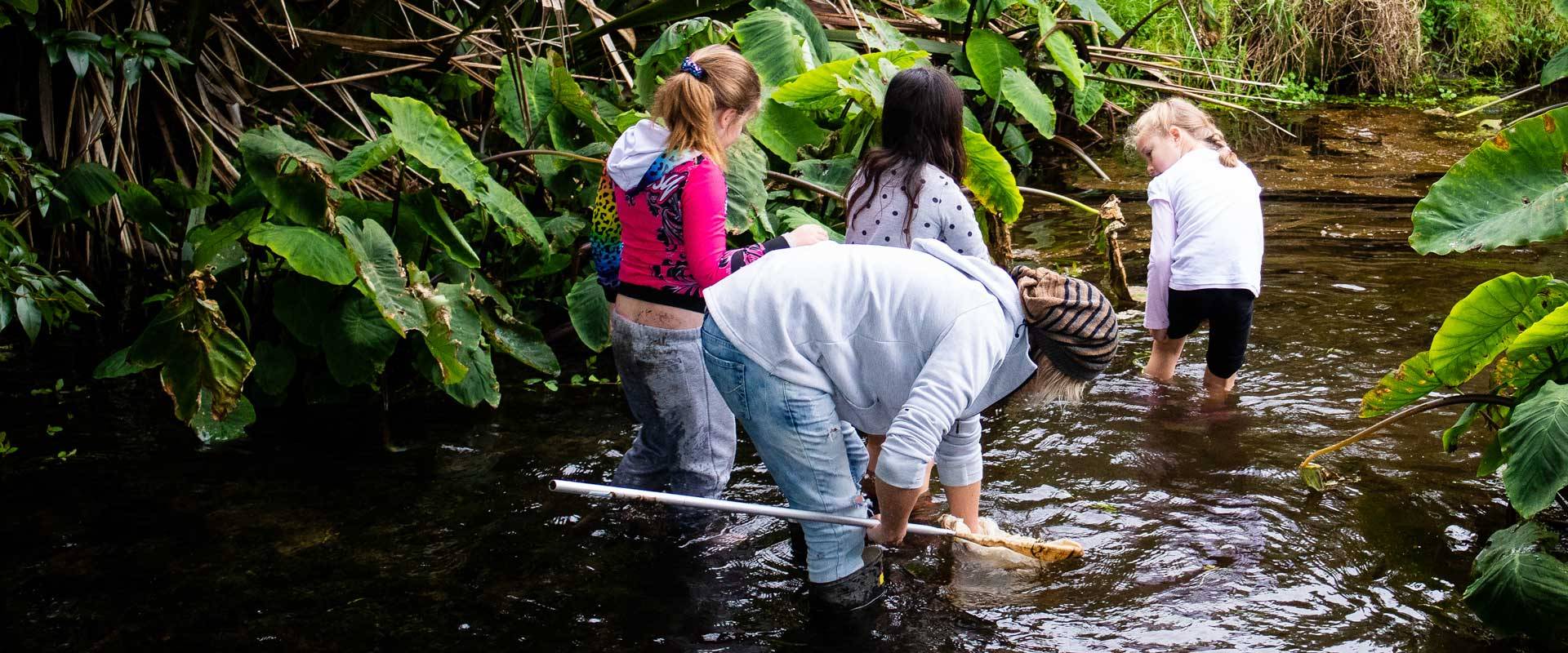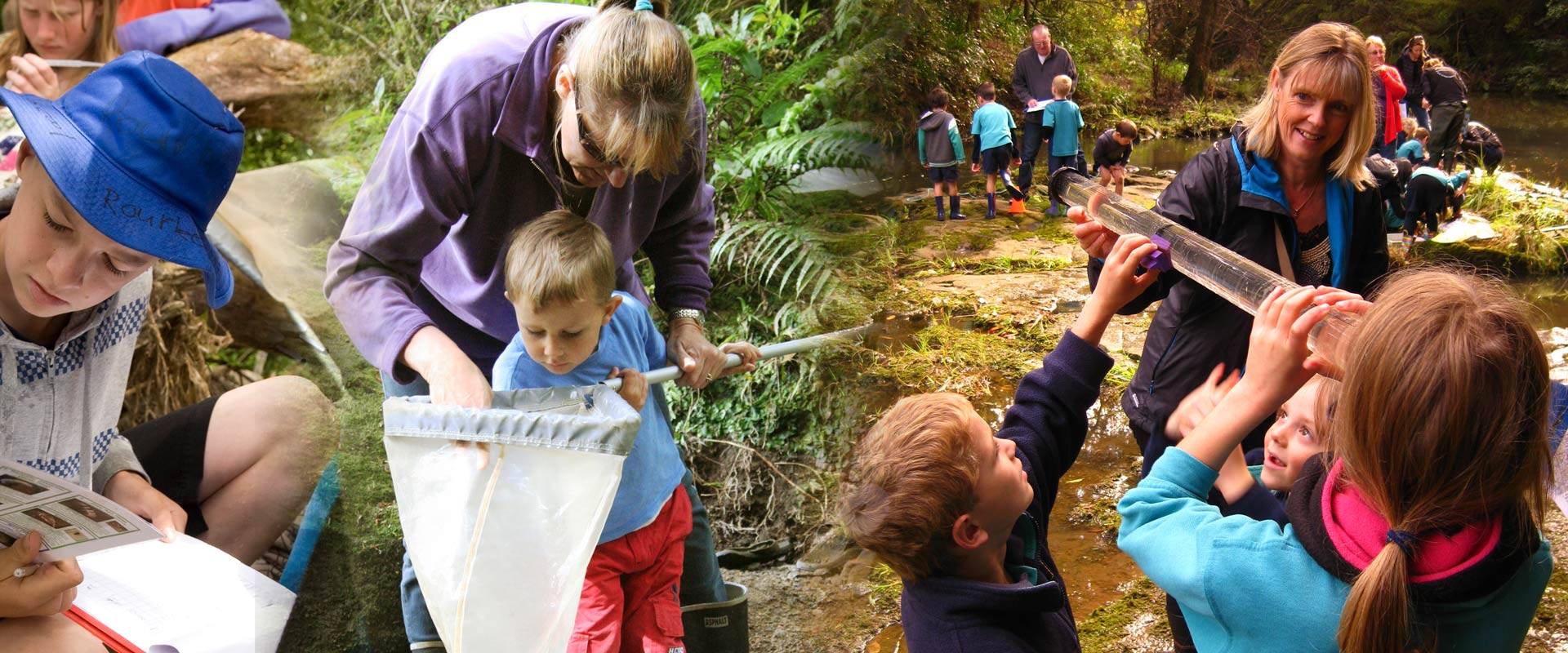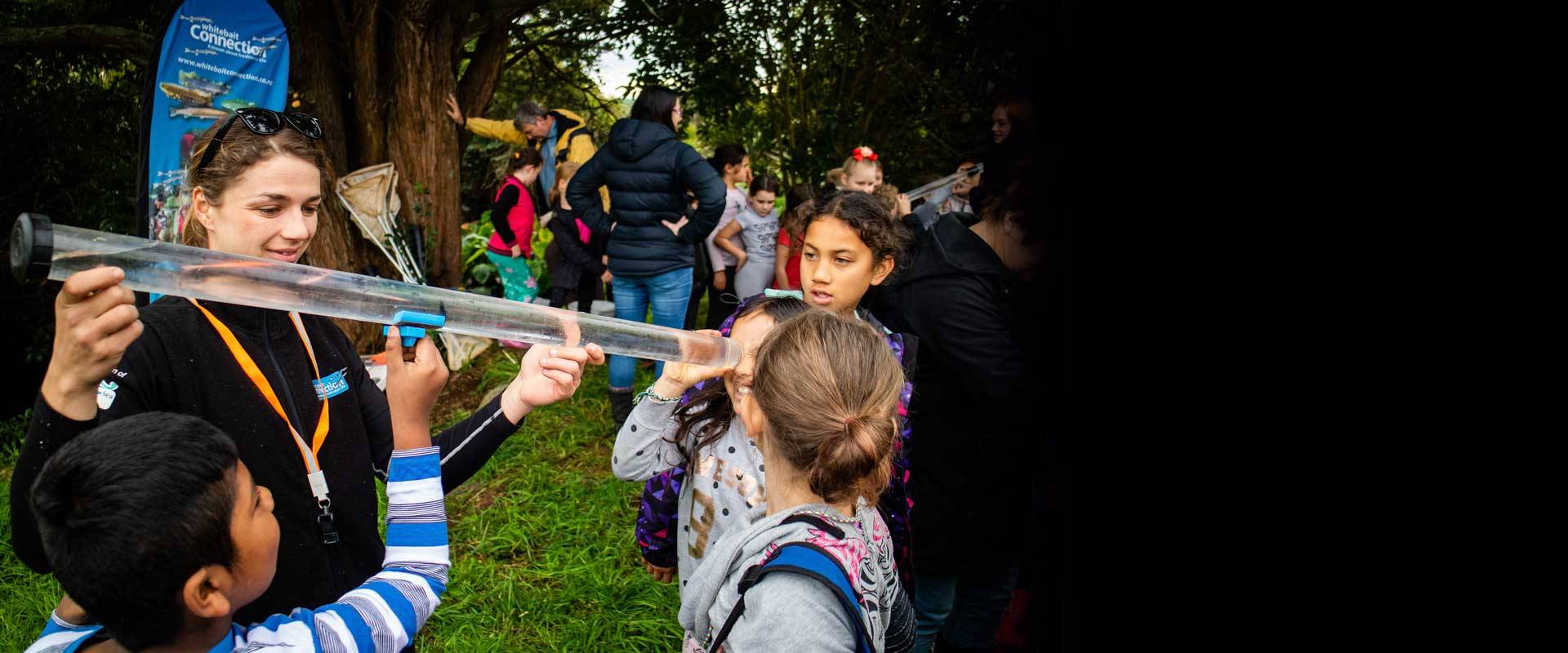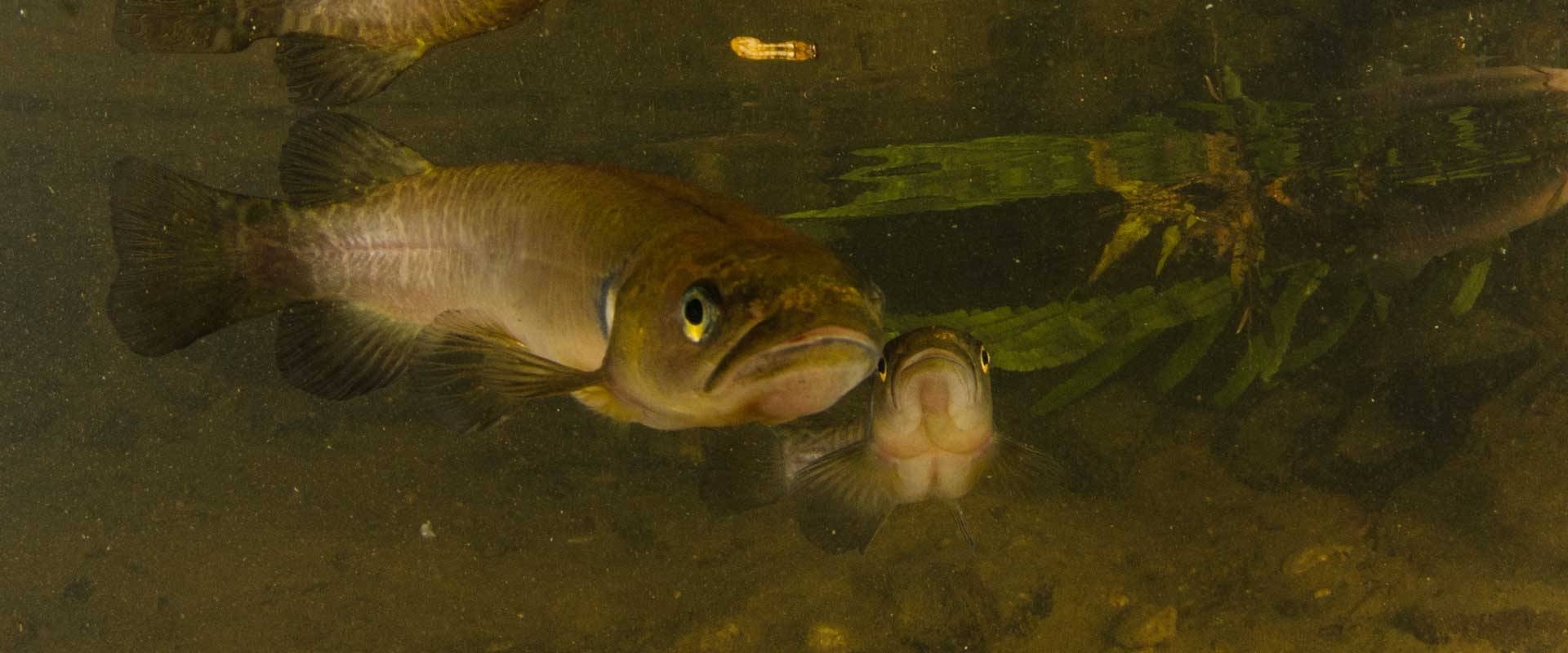 TKKMOTRR has a strong history of involvement in freshwater education and conservation within a local tikanga Māori context. Starting with the delivery of the Whitebait Connection with Whaea Ira and Meryl in 2006 and involvement in He Kakano Community Nursery since then. These early beginnings were documented in the winning te reo entrant to the Outlook for Someday film competition made by those students, which you can view here.
TKKMOTRR has a strong history of involvement in freshwater education and conservation within a local tikanga Māori context. Starting with the delivery of the Whitebait Connection with Whaea Ira and Meryl in 2006 and involvement in He Kakano Community Nursery since then. These early beginnings were documented in the winning te reo entrant to the Outlook for Someday film competition made by those students, which you can view here.
The biggest outcome has been annual planting events to restore the mauri to the Waitaua Awa, the main tributary to the Hātea and upper Whāngārei Harbour. 2013's Whitebait Connection Programme was no exception to this trend. Year 9 and 10 taiao and putaiao students discussed why the local catchment's water is important and some possible threats to freshwater quality in the river, including the local swimming hole at the Whāngārei Falls not far from the kura.
Year 9 student from Te Kura Kaupapa Maori O Te Rawhitiroa checking out the local swimming hole including the health warning about water quality.
Students decided the best place to investigate the water quality in the local area was at Whāngārei Falls – Otuihau, along the Waitaua River, as during this summer of drought it has been the best spot to cool off! On the field trip students were especially interested in the amount of fecal pathogens or 'poos' in the water as all summer there had been warning sign at the swimming hole about the water quality being not safe for swimming, but they had been swimming in it anyway.
When we first got to the falls students carried out the initial judgement on the water by rating the waterway from 1 – 10, where a low number indicates that they think it is so degraded and devoid of life that it will not recover in their lifetime, and high numbers mean they think the waterway is in it's best possible health for the life that depends on the water. Our average from the class of 11 students was 5.58, and the main reason for the less than perfect rating was the thick green algae collected around the shores of the pool at the bottom of the falls.
Our field trip results from the 3rd April, 2013 were...
|
Test carried out |
Result |
interpretation |
|
Temperature |
21 °C |
This is a lot (>3°C) warmer than our average overnight low this time of year, so we identified too much sunlight is probably getting onto the water upstream of here Could be better... |
|
Clarity |
82cm in still pool which had a lot of algae 100 cm + in flowing water out of the pool |
Good! |
|
Conductivity
|
350 ųS |
conductivity of over 200 ųS indicates a high level of mineral and nutrient content in the water, so... Could be better... |
|
Fecal count |
150 units per 100ml water |
These results indicate water is not safe to drink and unsafe for bathing. High levels of E coli entering the harbour also indicates it is unsafe to eat shellfish, so... Could be better... |
|
Macroinvertebrate sampling |
Species |
Sensitivity Score |
|
|
Dragon fly larvae |
6 |
|
|
Kewai |
5 |
|
|
Freshwater shrimp |
5 |
|
|
Average sensitivity score |
5.33 Could be better |
|
Other species seen |
Inanga seen shoaling from the shore |
Good! |
|
|
Bully spp caught |
Good! |
|
|
Tunatuana (juvenille eel) |
Good! |
|
|
Oxygen weed covering much of the bottom of the waterway |
This is a pest plant commonly introduced from people's aquariums, and stops the growth of native aquative plants, if there is a lot of nutrient present and low flow this plant can undergo a mass die off resulting in anoxic conditions in the water and killing off all other species in the water, so... Could be better... |
|
|
Green filamentous algae floating on about half the surface of the pool |
This algal growth indicates high sunlight combined with high levels of nutrient in the water, both of which are not the natural state of such a waterway and can reduce the biodiversity in the water, so... Could be better... |
Despite a less than ideal result on many of our tests, the students' average rating for the waterway health increased from 5.58 to 6.17.
“The water was green and stinky, but there was still eels and inanga living in there” Praise, year 9
Following the river investigation the group went on to assist in organising a planting event with the help of kura staff, WBC coordinator Nicki Wakefield, Matua Buck Cullen from He Kakano, Northland Regional Council's Enviroschools coordinator Susan Karels, Whangarei District Council parks staff and ended up planting over 1500 plants along the Waitaua River to help restore the Mauri by shading the river. It was an awesome day and well done Te Kura Kaupapa Maori o Te Rawhitiroa! Click here to see the newspaper article.








